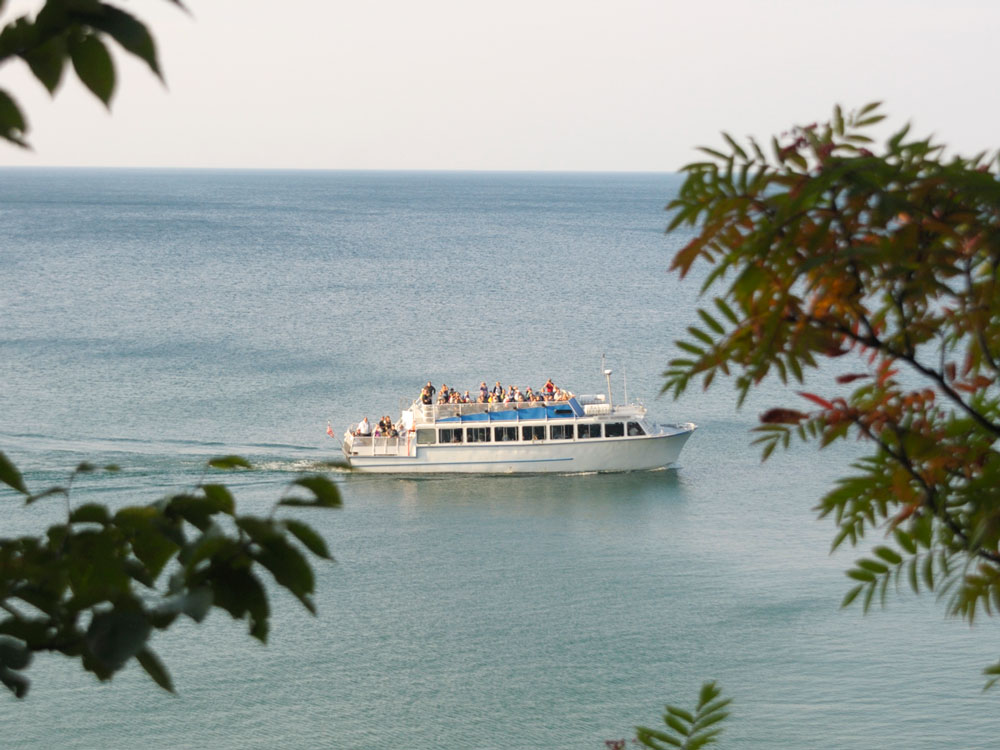We all know the Great Lakes: There’s Erie, Huron, Michigan, Ontario, and, of course, Superior. This aptly named lake system straddling the U.S. Midwest and Canada accounts for a whopping 20% of all the freshwater on Earth’s surface, with a combined coastline covering over 10,000 miles. All that makes for a pretty epic water playground, so it’s no surprise that the Great Lakes attract several million tourists from around the world each year. While you may know the basics about the Great Lakes, these 17 fascinating tidbits about world’s the largest freshwater system might surprise you.
They’re Home to the World’s Largest Freshwater Coastal Dune System
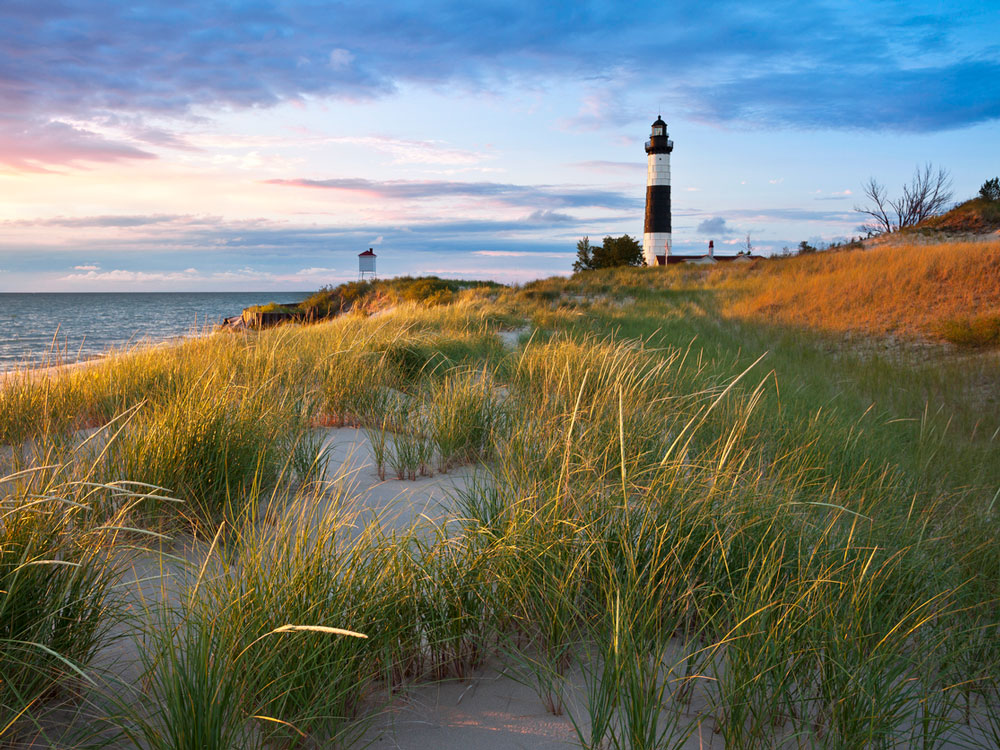
Thousands of tourists flock to the Great Lakes each year is to enjoy their beaches, but the lakes’ sandy shores are also home to a unique geological feature found nowhere else in the United States. The lakes boast the largest freshwater coastal dune system in the world. Lake Michigan alone is surrounded by more than 275,000 square acres of sand dunes. National and state parks — such as Sleeping Bear Dunes National Lakeshore and Pictured Rocks National Lakeshore — offer access to these magnificent dunes, which are perfect for hiking, sandcastle building, or simply laying back and enjoying the view.
Over 30 Million People Live in the Great Lakes Basin
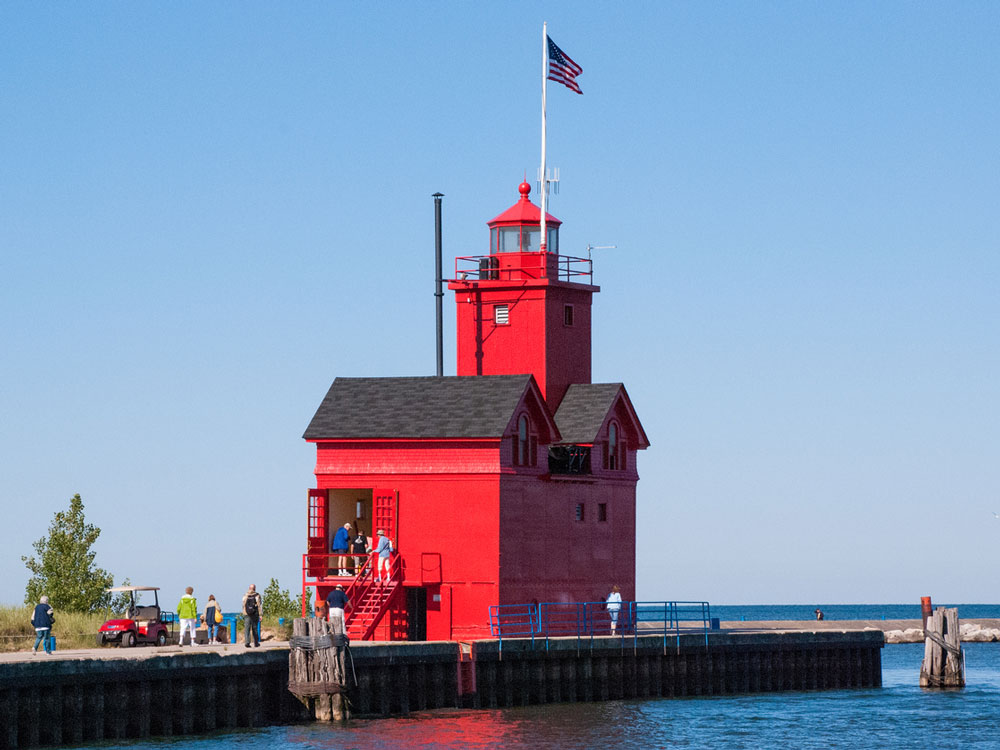
The Great Lakes hold about 84% of North America’s surface fresh water and thus play a vital role in the agricultural, power, and transportation industries. Some 34 million people live within the Great Lakes Basin, representing almost a third of the Canadian population and nearly 10% of the U.S. population. Together, the five lakes form a key part not just of North America’s cultural and geographic heritage, but also its technological and economic future.
Lake Superior Might Not Actually Be the World’s Second-Largest Lake

The largest of the Great Lakes, Lake Superior covers nearly 32,000 square miles and contains more water than the other four lakes combined. It’s often considered the largest freshwater lake in the world (the saltwater Caspian Sea is the largest overall). But since Lakes Michigan and Huron are connected by the four-mile-wide, 30-mile-long Straits of Mackinac, some scientists argue that they are in fact not two separate lakes but one larger body. If counted as one, Michigan-Huron would be larger than Lake Superior, pushing the latter into second place among the world’s largest freshwater lakes, and third place overall.
Half of All the Great Lakes Water Is in Lake Superior
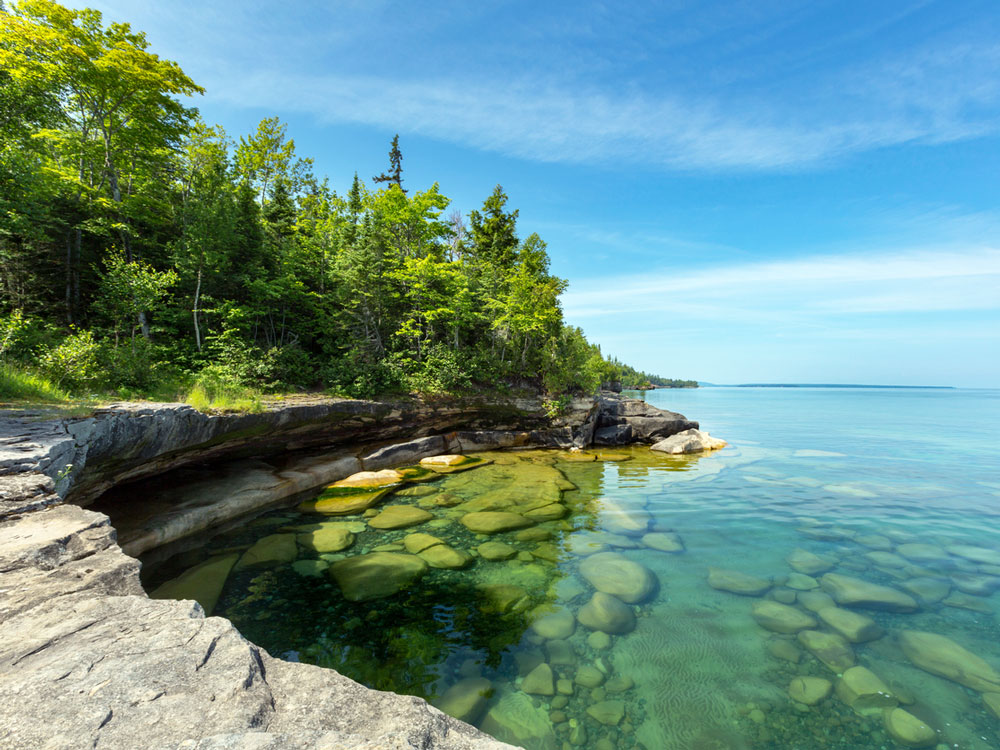
The Great Lakes contain a lot of water — more than 5,400 cubic miles — and Lake Superior, as its name would suggest, holds the lion’s share. Lake Superior’s volume is 2,900 cubic miles, or a whopping 3 quadrillion gallons. It has a retention time of 191 years, meaning it would take at least that long for all of the water in Superior to be replaced. In comparison, the retention time of Lake Erie is 2.6 years, and Lake Ontario’s is six years.
Only Lake Michigan Is Completely Within the U.S.
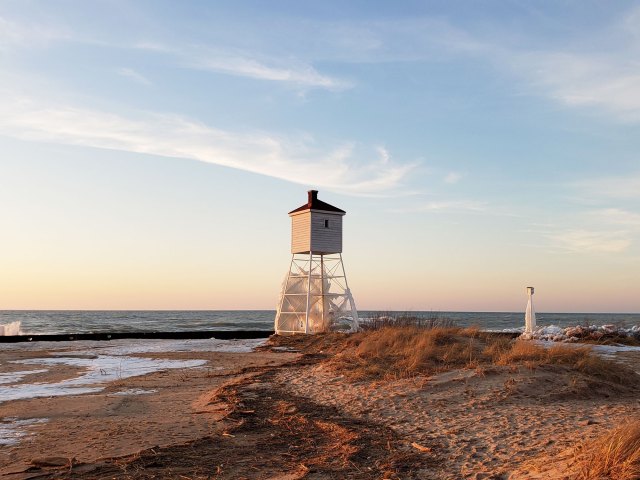
The Great Lakes border six Midwestern states — Illinois, Indiana, Michigan, Minnesota, Ohio, and Wisconsin — and two Canadian provinces, Ontario and Quebec. Lake Michigan is the only one of the Great Lakes that does not touch any Canadian territory. The lake’s name derives from the Ojibwa word mishigami, which means “large lake.” The state of Michigan was named after the lake, and it’s often nicknamed the “Great Lakes State” since it is the only state to touch four of the five lakes.
The Empire State Building Would Be Almost Entirely Submerged in Lake Superior
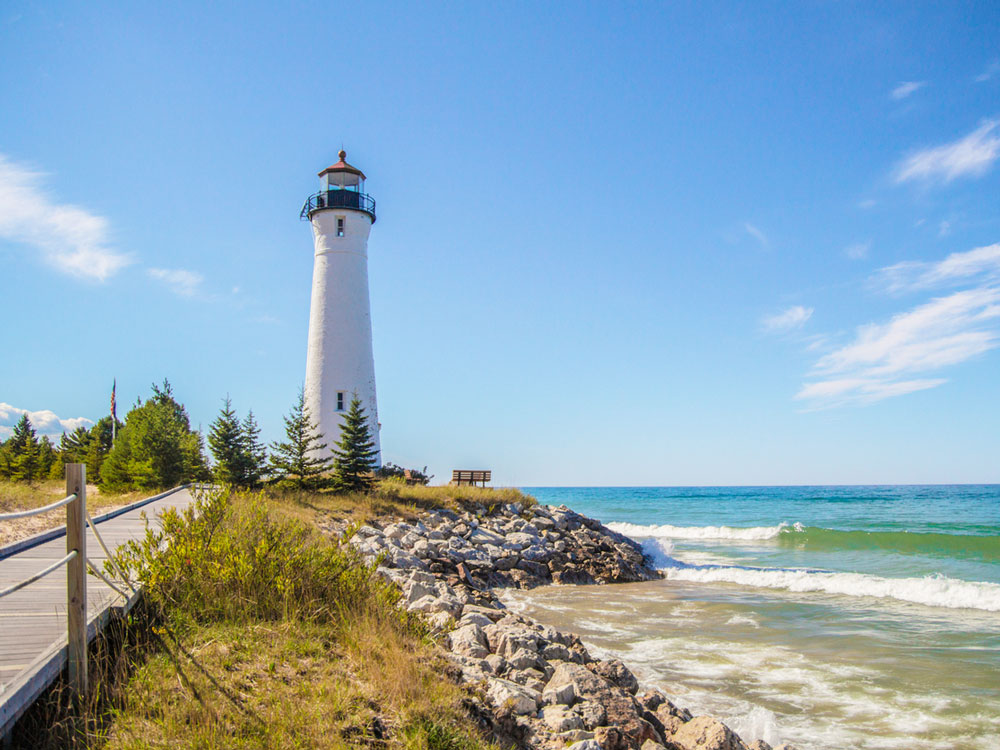
Lake Superior isn’t just big; it’s also quite deep. At its deepest point, the lake reaches 1,330 feet from the surface to the lake bed. To put that into perspective, New York’s Empire State Building is 1,250 feet tall, so if you placed it in Lake Superior, only the antenna (which reaches 1,454 feet) would peek out from the waters. Chicago’s John Hancock Center would be completely submerged, while the city’s Willis Tower (which reaches 1,729 feet to the tip) would have a little more clearance above the horizon.
Geologically Speaking, The Great Lakes Are Quite Young

Parts of Canada’s Hudson Bay are more than 4 billion years old. The Appalachian Mountains formed 480 million years ago. But the Great Lakes? They’re geological babies. They were carved out by glaciers some 10,000 years ago. That’s not to say the rocks around them are young — some of the rocks on Michigan’s Upper Peninsula date back approximately 3.6 billion years. The area covered by the Great Lakes was once a series of glacial rifts; as the ice receded, the melt filled the basins, creating the lakes we know today.
The Great Lakes Are Home to More Than 170 Fish Species
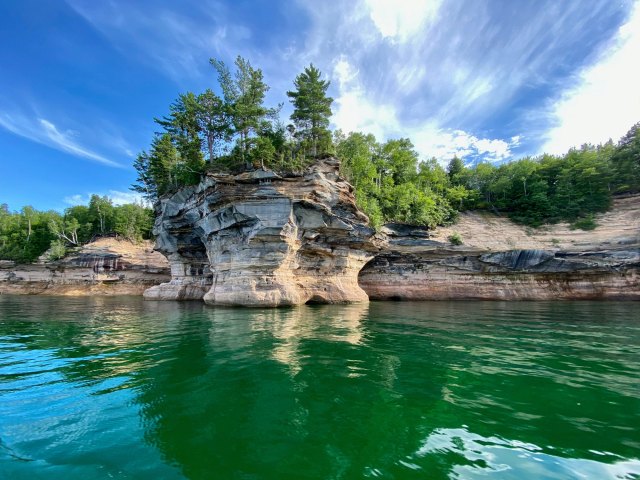
The waters of the Great Lakes maintain a thriving ecosystem with more than 170 fish species. Carp, catfish, bass, trout, perch, and walleye are among the most commonly caught species. The largest native species is the lake sturgeon, which can weigh up to 200 pounds and measure as tall as a full-grown man. Over the years, a number of invasive species have unfortunately made their way into the lakes, and these have caused lasting changes to the ecosystem. Sea lampreys, zebra mussels, and Asian carp are among those now living within the Great Lakes.
The Lakes Are Home to Over 6,000 Shipwrecks
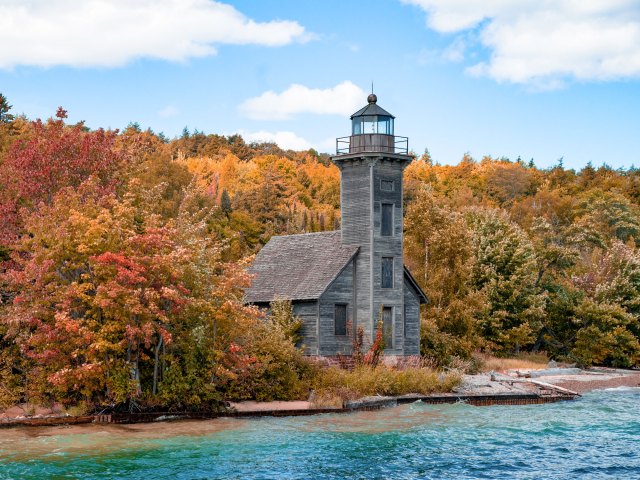
The waters of the Great Lakes can be treacherous, and as busy fishing and shipping areas, they’ve seen thousands of shipwrecks over the centuries. Gordon Lightfoot may have brought to light the tragedy that befell the Edmund Fitzgerald in his hit 1976 song, but that is just one of the many ships that lie on the lake beds or along the shoreline. The Great Lakes Shipwreck Historical Society and Museum in Paradise, Michigan, documents these sunken vessels and organizes recovery dives. Visitors to the museum can see recovered artifacts and follow guided treks to some coastal shipwreck sites.
Lake Michigan Once Had a Serious Pirate Problem
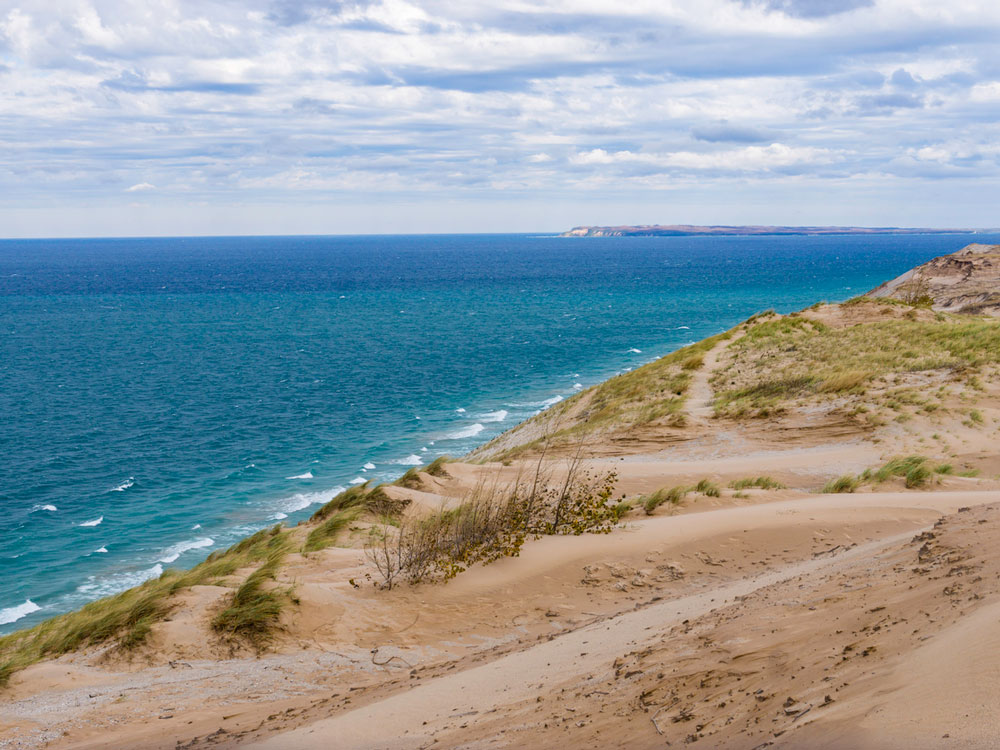
Forget the Pirates of the Caribbean: The Great Lakes had their own share of buccaneers who patrolled the dangerous waters and terrorized the lake traffic, mainly in the mid-1800s into the early 1900s. Oddly, these pirates were more likely to wield a Bible than a sword, and instead of gold, lumber and alcohol were the main prizes to be won. One of the more famous characters was “King” James Jesse Strang, a self-proclaimed religious leader (and looter). “Roaring” Dan Seavey was another — and the only one to actually face charges of piracy on the Great Lakes. The former Navy sailor set false lights along the coastline, lured ships to their doom, and plundered the wreckage. Fortunately for locals, as the population along the Great Lakes grew in the 20th century, the pirate problems on the Great Lakes eventually faded away.
There’s Supposedly a Lake Monster

Every region has its mythical creatures, and the Great Lakes are no exception: Scotland has the Loch Ness Monster (nicknamed Nessie), and the Great Lakes have Bessie. The 20-foot-long sea serpent reportedly lives in Lake Erie. Fishermen on the lake claimed to have first spotted her in the 1790s, and she made several more appearances in the 1980s. Bessie is not the only Great Lakes cryptid, either. Lake Superior has Pressie, also a sea serpent, while Lake Huron has Mishebeshu, a water lynx said to hunt children from beneath the ice. Also in Lake Huron is Saggy, a comparatively tame sea serpent who likes to rub against fishing boats.
Lake Erie Was the Site of a Decisive 1813 Victory
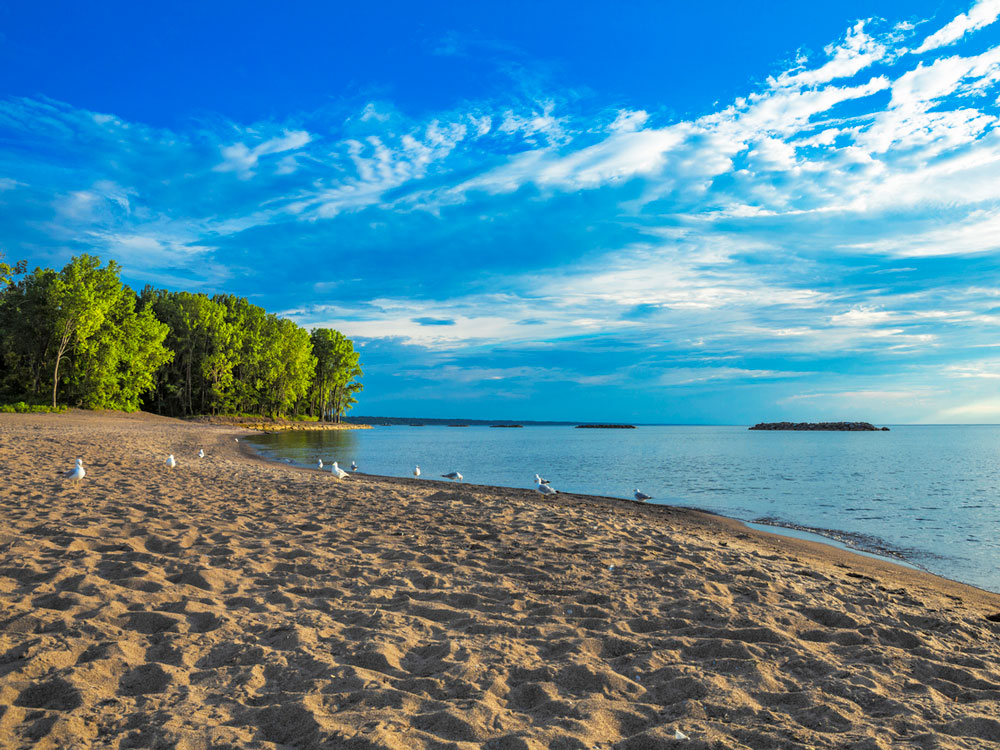
Lake Erie played a major part in the War of 1812, as the site of the first British naval defeat. In September 1813, nine American ships led by Captain Oliver Hazard Perry fought six British warships for several hours. Perry’s ship, the Lawrence, was all but destroyed, so he boarded the Niagara and ordered the ship to fire directly at the British. The British were forced to abandon the Detroit and surrender. Thanks to the Battle of Lake Erie, the U.S. was able to regain control of the lake and the surrounding territories.
There’s a Lake Michigan Triangle, Similar to the Bermuda Triangle

There’s one part of Lake Michigan that is particularly treacherous for ships, so much so that it is often compared to the Bermuda Triangle. The Lake Michigan Triangle covers an area between Benton Harbor and Ludington in Michigan and Manitowoc, Wisconsin. Tales abound of ships that mysteriously disappeared, never to reach their destinations, and many still avoid the area out of superstition. To add to the mystery, divers have found underwater monuments the size of Stonehenge, complete with carvings of prehistoric creatures.
It’s a 6,500-Mile Journey to Drive Around All the Lakes
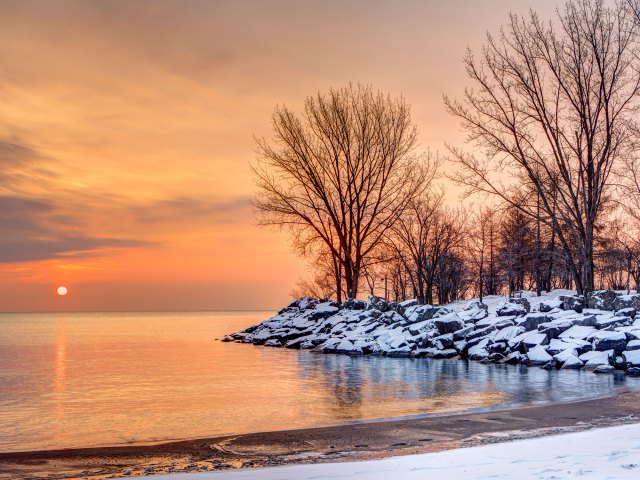
To see as much as you can of the Great Lakes without actually stepping foot on a boat, consider the Circle Tour. In 1988, the Great Lakes Commission created a scenic driving route that encircles all five lakes, passing through eight states and Ontario. To complete the entire Circle Tour would mean driving a total of about 6,500 miles, but you can break it into smaller chunks by choosing to circle just one of the lakes. If the Lake Superior tour (1,287 miles) seems a touch too long, try the routes around Lake Michigan or Erie, which are each closer to 600 miles. Just remember to allow plenty of time to get out and enjoy the view.
The World’s Largest Underground Salt Mine Is Under Lake Huron

What is now the Goderich Salt Mine was discovered by accident in 1866. A local flour mill owner was drilling for oil in the hope of striking it rich, and instead found rock salt, the first bed ever found in North America. Much of the mine is located some 1,800 feet below Lake Huron. That’s as deep as Toronto’s CN Tower is tall. The rock salt is shipped along the St. Lawrence Seaway before being distributed across the country for use in icy weather. It is now the world’s largest underground salt mine, covering an area of 2.7 million square miles.
There Are More Than 35,000 Islands in the Great Lakes
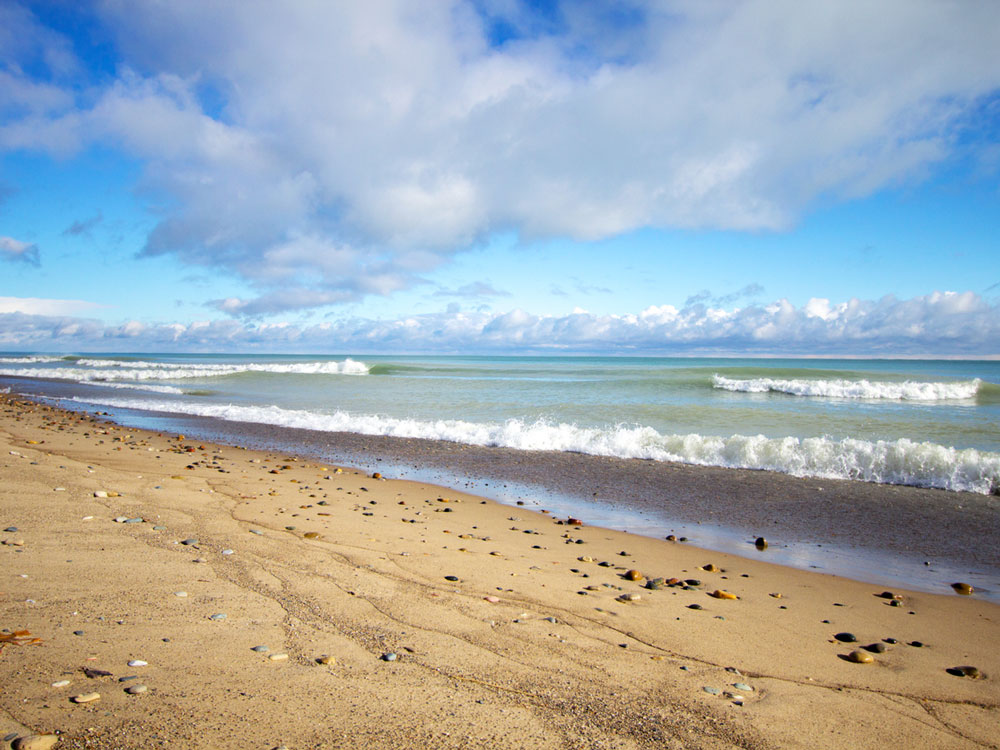
More than 35,000 islands are scattered throughout the Great Lakes. Most are tiny and uninhabited. The largest is Manitoulin Island, located at the northern end of Lake Huron. It has an area of 1,068 square miles and is the world’s largest freshwater lake island. The island itself also has 108 small lakes. Approximately 12,600 people live permanently on Manitoulin Island, but the population grows significantly during tourist season.
Legend Has It That Babe Ruth’s Ball Is at the Bottom of Lake Ontario
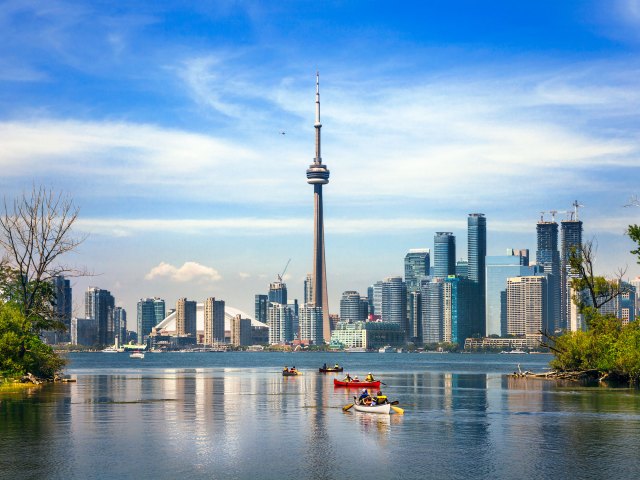
According to baseball legend, Babe Ruth’s first official home run sent a ball straight into Lake Ontario, where it remains to this day. In 1914, Ruth joined the Providence Grays, and in September of that year, the team traveled to Hanlan’s Point, Toronto, to play the Toronto Maple Leafs. In the sixth inning, he hit a home run, sending the ball far out of the stadium. What really happened to it is unknown. Most likely, a fan found it, or it was lost over time. However, a persistent local legend is that Ruth hit the ball clean into the lake — and it might one day be washed to shore.
Featured image credit: doug4537/ iStock
More from our network
Daily Passport is part of Optimism, which publishes content that uplifts, informs, and inspires.






